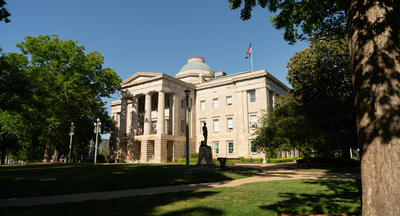
State Government Affairs, Elections & Campaigns
How Lieutenant Governors Are Selected (And Why It Matters)
December 10, 2025 | Bill Kramer

Key Takeaways:
Earlier this month, Louisiana state Rep. Francis Thompson, the longest-serving legislator in state history, announced that he was switching his political party affiliation from Democratic to Republican. By switching parties, Rep. Thompson has tipped the scale in the Louisiana House, giving Republicans a veto-proof supermajority of 70 members. The GOP already controls a supermajority in the Louisiana Senate, so this party switch of a single member gives Republicans the numbers to override any vetos from Gov. John Bel Edwards (D) — for the first time in state history — as they prepare to begin their legislative session on April 10.
Republicans now hold veto-proof supermajorities of both legislative chambers in 19 states (or 43 of 99 legislative chambers if we include states with supermajorities in only one chamber), while Democrats control supermajorities in both chambers of only 9 states (or 21 legislative chambers).
Because of the supermajority threshold, this was a particularly consequential party switch. But it’s not terribly rare for state legislators to move on from the political party whose ticket they were originally elected on. Ballotpedia keeps a running tabulation of party switching at the state legislative level dating back to 1994 (while it doesn’t claim to be comprehensive, it’s the best record we’ve got). According to their tally, a total of 168 state lawmakers have switched political parties over the last three decades. Of those, 79 lawmakers switched from D to R, while 23 switched from R to D (with many Independents switching in between). Over the past 15 years, this averages out to about 10.5 switches per year.
Just this year, in addition to Rep. Thompson in Louisiana, Sen. Samuel Thompson (no relation to Francis) in New Jersey left the GOP for the Democrats, and two senators from South Carolina and Mississippi left the Democrats to become Independents. Last year, eight state lawmakers across the country changed their party affiliation. And there were 20 state legislative party switchers in 2021. And many of us remember when Gov. Jim Justice of West Virginia, elected as a Democrat in 2016, bolted to join the Republicans the very next year (although Justice was a registered Republican until 2015).
Over the last 15 years, Ballotpedia has tallied 157 party switches by state lawmakers. This averages out to about 10.5 switches per year.
The biggest recent year for party switching was 2010. In that year, 28 state lawmakers switched parties. And of those, 25 left the Democrats to become Republicans. This proved prophetic, as Democrats lost a historic number of state legislative seats in the 2010 elections. In recent years, switching parties has also been geographically concentrated in the southeastern and Appalachian states. Louisiana, Mississippi, Alabama, Georgia, Kentucky, and West Virginia saw the most state lawmakers switching parties, a majority of which joined the Republican party. This coincides with the political shifts in the south, where a stronghold of conservative Democrats has disappeared to retirement, electoral defeat, or departure to the Republican party.
With 7,386 state legislative seats around the country, a non-insignificant number of seats are bound to become vacant or decide to switch political affiliations. Because of that, it’s important to keep in mind that state legislative control is not static after election season, and we can see seats and political control switch even between major elections.
For more timely insights like this, be sure to sign up for our Morning MultiState weekly morning tipsheet. We created Morning MultiState with state government affairs professionals in mind — sign up to receive the latest from our experts in your inbox every Tuesday morning. Click here to read past issues and sign up.

December 10, 2025 | Bill Kramer
-d868d2-400px.jpeg)
July 1, 2025 | Maggie Mick

June 23, 2025 | David Shonerd